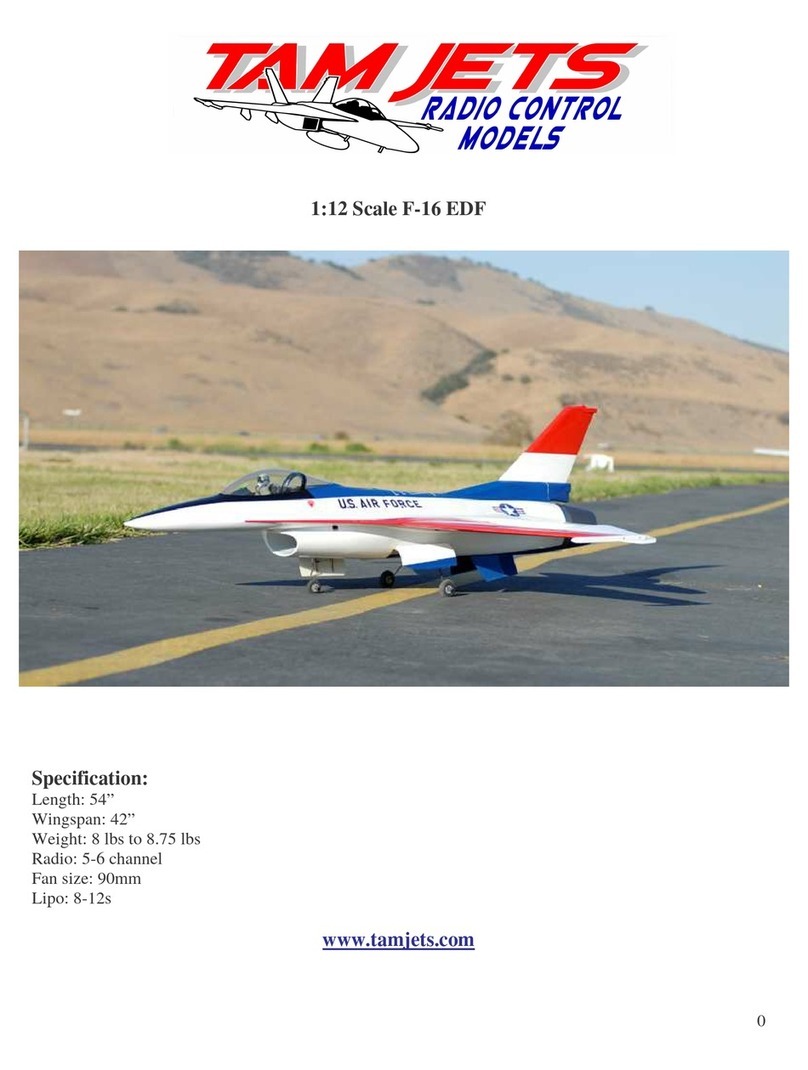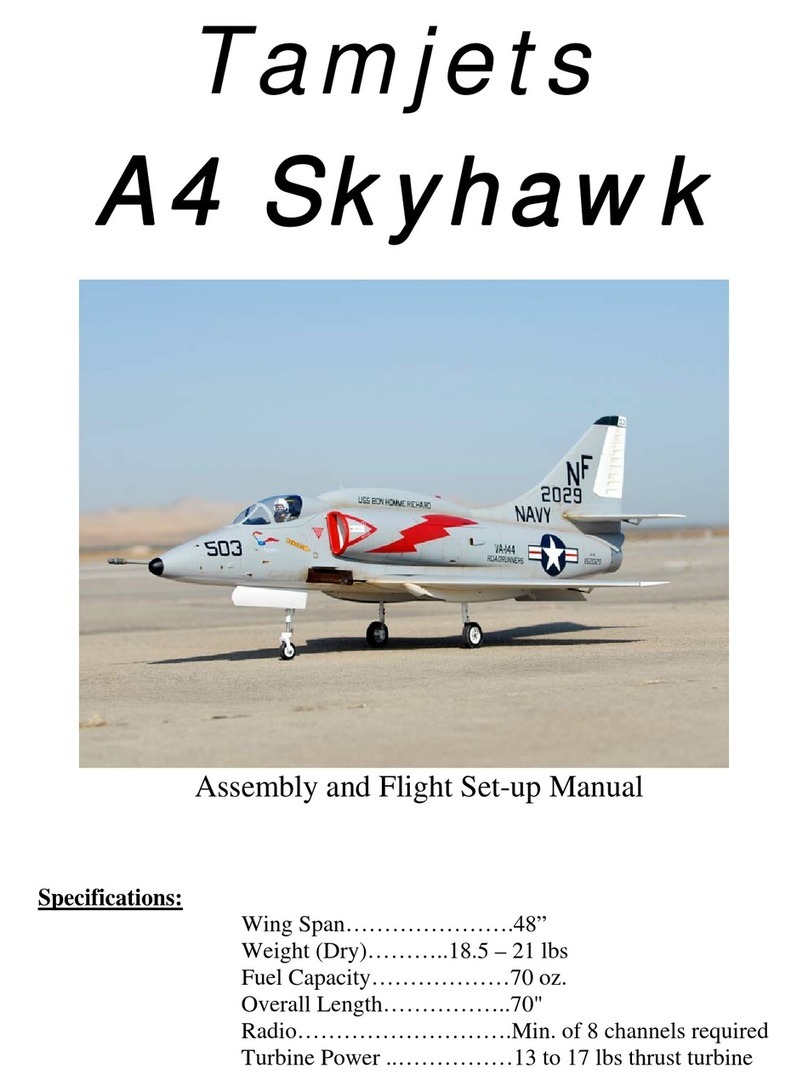
Tamjets F-16 Instruction Manual
Standard Kit Contents
1- 1 Fuselage with tail cone
2- 1 Canopy and frame
3- 1 Rudder base (where the rudder servo installed)
4- 2 Wings, 2 Horizontal stabs, 1 Vertical stab with rudder
5- 3 gear doors, 2 ventral fins and 2 wing missile rails
6- Fiberglass cockpit deck
7- Hardware Accessory Package
a. 2 Carbon push rods, 4 4-40 end cabs, 2 Sullivan gold-clevises
b. 2 Elevator control arms` and 4 plastic washer (for elevators stab)
c. 8 Offset gear door hinges with micro screws
d. 8 Servo bracket with servo screws
e. 1 Pull-Pull cable and hardware
f. 12 4-40 x5/8” screws and tee nuts (for retracts)
g. 8 5-40 x 5/8” and 1 aluminum washer (for vertical fin)
h. 1 M3 x 25mm screw for rudder pin
i. Nose reinforcement support former and hardware
j. Pipe support former and 2 1/8” plywood mounting blocks
k. Nose accessories wood tray with support formers
Landing gear package
1. Complete retracts with struts and wheels/brakes
2. 3 different colors of heavy duty airline
3. 12 Metal Tees
4. 2 Air fill valves
5. 1 Retract valve with hardware
6. 1 Brake valve
7. 2 300 cc air bottles
8. 4 Brake clips
Turbine install kit
1. Tamjets pipe, 3 fuel cells, UAT, fuel line and hardware
Gear door package
1. 3 Air cylinders and gear door closing valve
Cockpit kit
1. Thunder Bird or Military version available
www.tamjets.com 408-224-7600 3of64





























